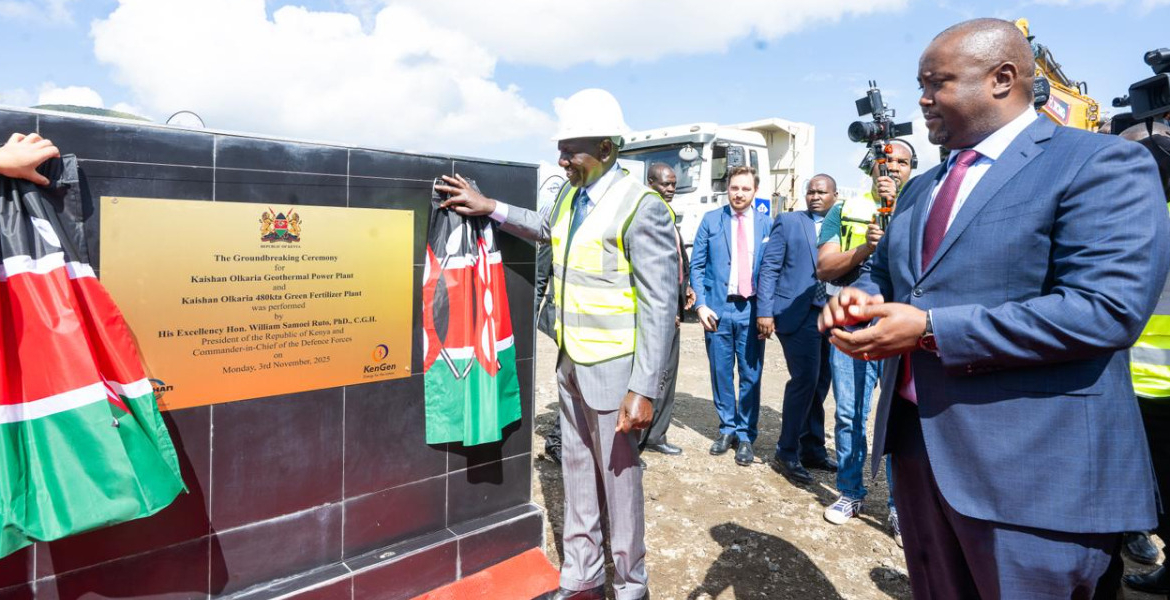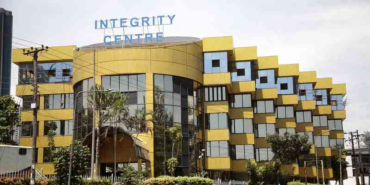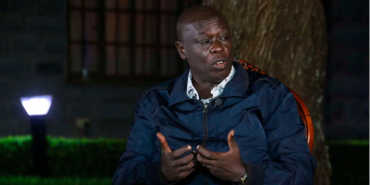Kenya Launches Africa’s First Green Ammonia Fertiliser Plant

Kenya has begun construction of Africa’s first green ammonia fertiliser plant in Olkaria, Nakuru County, a project launched by President William Ruto to boost local production and reduce reliance on imports.
The facility, developed through a partnership between the Kenya Electricity Generating Company (KenGen) and Chinese firm Kaishan, will use 165 megawatts of geothermal energy to produce green ammonia. Once completed, it is expected to supply up to 480,000 tonnes of fertiliser each year, significantly cutting into Kenya’s current import volumes.
The country imported more than 600,000 tonnes of fertiliser in 2023 and nearly three-quarters of that amount again in the first half of 2025, at a cost of about KSh60 billion. Speaking at the groundbreaking ceremony, President Ruto described the project as a major step toward economic independence and environmental responsibility.
“Each shipment represents a cost to our Treasury and a lost opportunity for our people,” he said.
He added that the new facility would help Kenya achieve self-sufficiency and resilience in fertiliser production. The plant’s use of geothermal energy highlights Kenya’s broader goal of promoting sustainable industrial growth. The country has an estimated 10,000 megawatts of geothermal potential but currently uses only about 1,000 megawatts.
By expanding this capacity, the government aims to increase access to clean energy while supporting low-carbon manufacturing. The project is expected to reduce carbon dioxide emissions by more than 600,000 tonnes each year, the equivalent of removing around 130,000 petrol-powered vehicles from the road. It will also create over 2,000 jobs and train a new generation of professionals in geothermal, hydrogen, and industrial technologies.
Valued at $800 million, the plant is projected to generate annual profits of more than $13 million for KenGen and could enable the company to participate in carbon credit trading. President Ruto noted that producing green fertiliser locally would enhance the competitiveness of Kenyan exports and align the country with emerging global sustainability standards.
The Olkaria plant is part of a wider plan to expand Kenya’s infrastructure and energy capacity. The government aims to raise national electricity generation from the current 2,300 megawatts to at least 10,000 megawatts within ten years. To support this goal, President Ruto announced the creation of a National Infrastructure Fund and a renewed push for public-private partnerships in energy, transport, and water projects.
Among the initiatives outlined are the construction of 50 large dams to irrigate 2.5 million acres of farmland, aimed at lowering the country’s KSh500 billion annual food import bill. Transport upgrades will include dualing 1,000 kilometres of highways and tarmacking 10,000 kilometres of rural roads to improve connectivity and access to markets.
“This is the scale of our ambition,” President Ruto said. “To build a modern, food-secure nation supported by world-class infrastructure.”








Add new comment